
Deanna Kreisel, “The Discovery of Hyperspace in Victorian Literature”
This article examines the discovery of non-Euclidean and higher-dimensional geometries in the latter part of the nineteenth century.
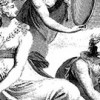
Siobhan Carroll, “On Erasmus Darwin’s The Botanic Garden, 1791-1792″
1792 witnessed the publication of the complete version of Erasmus Darwin’s The Botanic Garden, a lengthy nature poem that surveyed the state of science in its day. The Botanic Garden proved immensely popular on its publication but later fell out of favor as the Anti-Jacobin took aim at its liberal politics. This paper focuses on one of the most notorious sections of the poem, in which Darwin describes his plan to change the world’s climate via iceberg destruction. The argument traces the reception of Darwin’s climate imagery from its initial reception through its redeployment in the poetry of Percy Bysshe Shelley. Although The Botanic Garden and its plan for climate intervention might be framed in terms of what philosophers call the “negative event”—an event that fails to happen—Darwin was essentially correct in his assertion that the technologies of the industrial revolution could be used to change the climate of the globe.
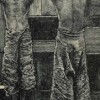
Erika Rappaport, “Object Lessons and Colonial Histories: Inventing the Jubilee of Indian Tea”
The fifty-year Jubilee of Indian tea was celebrated in the Spring and Summer of 1887, coinciding precisely with Queen Victoria’s Golden Jubilee. This Jubilee had nothing to do with Victoria per se, but rather the commercial anniversary invented Indian/Ceylon tea as an icon of imperial Britishness. Industry leaders used 1887 to highlight specifically two key events in tea’s commercial and imperial history, the first moment tea arrived in Britain from Assam (1837) and the first time (April 1887) that tea from both India and Ceylon surpassed imports from China. They explained the later development by arguing that Britons had learned to appreciate modern industrial production and plantation agriculture more than old-fashioned and dirty Chinese modes of production. The Jubilee thus marked publicly how and when tea became a mass-produced and consumed imperial product.
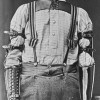
Sue Zemka, “1822, 1845, 1869, 1893, and 1917: Artificial Hands”
The manufacture of artificial limbs was a Victorian growth industry, requiring an assortment of qualifications: mechanical skills, sympathy for the disabled, commercial ambition, a willingness to exaggerate in advertising, and faith in technological progress. This essay explores nineteenth-century designs for artificial hands, focusing on the stories they relay about the relationships between the people who needed artificial hands and the people who made them. These relationships concertize and personalize the complex factors at play in the history of Victorian hand prostheses: philosophies of embodiment, the hand’s role in these philosophies, the experiences of people without a hand or hands, and the impact of technology on all three.
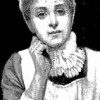
Arlene Young, “The Rise of the Victorian Working Lady: The New-Style Nurse and the Typewriter, 1840-1900”
The increasing demographic imbalance between men and women in Britain in the nineteenth century forced many women and girls from the middle classes to seek employment to maintain themselves because, in the words of one commentator, “there were not enough husbands to go round.” Working for pay, however, was considered déclassé and the employments that emerged as two of the most popular for middle-class women, nursing and typewriting, had to overcome cultural resistance.

Anna Kornbluh, “Thomas Hardy’s ‘End of Prose,’ 1896”
This entry considers Thomas Hardy’s “End of Prose,” his renunciation of the novel in favor of poetry, as an important event in nineteenth-century literary history, motivated by aesthetic concerns. It reads the geometric imagery in Hardy’s final novel, Jude the Obscure, in connection with the advent of non-Euclidean geometry, suggesting that mathematical forms inspired Hardy’s turn to the poetic line.
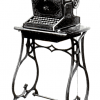
Christopher Keep, “The Introduction of the Sholes & Glidden Type-Writer, 1874”
The introduction of Sholes & Glidden Type-Writer, the first commercially successful instrument for mechanical inscription, played a significant role in adapting alphabetic communications to the exigencies of capitalism as it came to increasingly depend on the transcription and management of printed matter. At a time when government agencies and businesses were seeking greater efficiencies in their clerical workforce, the imagined fit between typing and other kinds of feminine work (needle point and performing on a pianoforte), helped draw large numbers of women into the white-collar workforce. The article concludes by examining how the “irruption of the mechanical” into the act of self expression occasioned by the spread of typewriting was taken up as a theme in the literature of the late-nineteenth century, with particular attention to Bram Stoker’s Dracula (1897).

Nancy Armstrong, “On Charles Darwin’s The Descent of Man, 24 February 1871″
The Descent of Man, and Selection in Relation to Sex (1871) lays out how the principle of sexual selection could produce the splendid variety of animal life forms. This was Darwin’s way of explaining how human beings descended from animals. More to my point, however, this was Darwin’s way of accounting for the variations required before his principle of natural selection could promote some forms of life at the expense of others. Without the concept of “variation,” the theory of natural selection he proposed in The Origin of Species (1859) would not have been all that different from those of his competitors, save Alfred Russell Wallace. Nor could Darwin’s theory of evolution have achieved the extraordinary explanatory power it did. The Descent invites us to rethink this concept outside the gendered binaries of Victorian thought, so that it can challenge the primacy of natural selection.

Amy M. King, “Publication of Gilbert White’s The Natural History of Selborne, 1789″
In 1789, Gilbert White publishes The Natural History of Selborne, which encapsulates in epistolary form his natural history observations of a single parish for forty years. Selborne’s way of looking at nature—attentive, local, and reverent—popularizes a way of looking at nature that persisted in popular natural history throughout the nineteenth century. The importance of White’s natural history, both in itself and through its afterlife as a canonical text, depends on our understanding its key orientation: nature as seen through the lens of ecology and reverence.

Linda M. Shires, “Color Theory—Charles Lock Eastlake’s 1840 Translation of Johann Wolfgang von Goethe’s Zur Farbenlehre (Theory of Colours)”
The nineteenth century witnessed major developments in color theory, pigment manufacturing, and painting techniques. In 1840, Charles Lock Eastlake—painter, art scholar, and collector—translated Goethe’s 1810 Zur Farbenlehre or Theory of Colours as a handbook and a history, with his own erudite notes, to aid British painters. The volume aimed to offer nineteenth-century artists a deeper education in color than Royal Academy training, which still emphasized imitation of old masters with instruction in composition and line. Eastlake also aimed to restore Goethe’s Aristotelian emphasis on the eye’s perception of color. A focus of debate among scientists and artists, the anti-Newtonian Theory of Colours seriously engaged painters as different in style as J. M. W. Turner and Holman Hunt, both of whom were fascinated by color and nature as seen by the eye. Moreover, Eastlake’s learned notes remained unrivaled for their detailed knowledge of Aristotelian natural science and optics, early technical treatises on painting, and specific Renaissance paintings. Charles Lock Eastlake, a growing authority in the art world of London, went on to be knighted (1850), elected President of the Royal Academy (1850), and appointed the first Director of the National Gallery of Art (1855).
